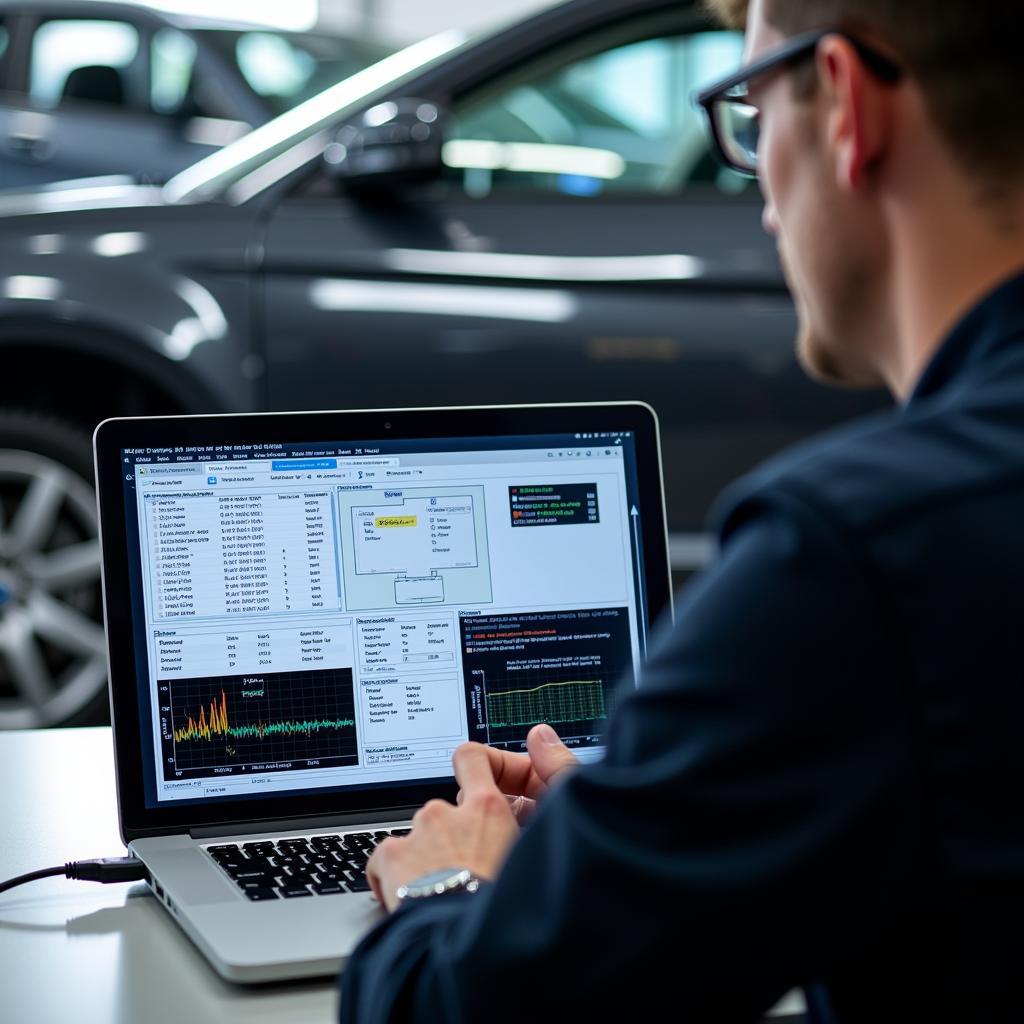The electronic parking brake (EPB) is a safety-critical system in your 2014 BMW M6. When functioning correctly, it provides a convenient and reliable way to secure your vehicle when parked. However, like any other electronic system, it can occasionally malfunction, triggering a warning message on your dashboard. This comprehensive guide will explore the common causes of the “2014 BMW M6 Electronic Parking Brake Warning” and provide practical solutions for troubleshooting and resolving this issue.
Understanding the Electronic Parking Brake System
Before delving into the troubleshooting process, it’s crucial to understand the basics of the EPB system in your 2014 BMW M6. Unlike traditional hand-operated parking brakes, the EPB uses an electronic button to activate and release the brakes. When engaged, the system employs an electric motor to apply the brakes, holding the vehicle securely in place.
This system relies on several key components, including:
- EPB Button: Located on the center console, this button allows you to engage and disengage the parking brake electronically.
- Control Unit: The EPB control unit receives signals from various sensors and controls the electric motor that applies the braking force.
- Electric Motor: This motor, mounted within the brake caliper, receives commands from the control unit to engage and release the parking brake.
- Sensors: The system uses wheel speed sensors, brake pedal position sensors, and other sensors to determine when to activate or deactivate the EPB.
 Diagram illustrating the key components of the electronic parking brake system
Diagram illustrating the key components of the electronic parking brake system
Common Causes of the EPB Warning
A variety of factors can trigger the EPB warning light in your 2014 BMW M6. These range from simple issues like a faulty switch to more complex problems requiring professional diagnosis and repair.
Here are some of the most common culprits:
- Low Battery Voltage: The EPB system requires sufficient battery power to operate correctly. A weak or dying battery can lead to erratic behavior, including the illumination of the warning light.
- Faulty Brake Pad Wear Sensor: The EPB system often shares sensors with the brake pad wear indicator. If the brake pads are worn down, the sensor might trigger both a brake pad replacement warning and the EPB warning.
- Malfunctioning EPB Button: Over time, the EPB button itself can wear out or become faulty. This can result in intermittent communication with the control unit, leading to the warning light.
- Issues with the Control Unit: The EPB control unit is the brain of the system, and any malfunction within it can disrupt its operation, triggering the warning light and potentially affecting the parking brake’s functionality.
- Problems with the Electric Motor: The electric motor responsible for applying the parking brake force can fail due to wear and tear, mechanical issues, or electrical problems.
Troubleshooting the EPB Warning: A Step-by-Step Guide
Before rushing to a mechanic, you can try some basic troubleshooting steps to identify and potentially resolve the issue yourself:
- Check the Battery: Start by inspecting your car battery’s terminals for any corrosion or loose connections. Ensure the battery is adequately charged.
- Inspect Brake Pads: If you haven’t changed your brake pads recently, check their condition. Worn-out brake pads can trigger the EPB warning light.
- Test the EPB Button: Try pressing and releasing the EPB button multiple times to check for any sticking or inconsistent response.
- Restart Your Vehicle: Sometimes, a simple system reset can clear temporary glitches. Turn off your car, wait a few minutes, and restart it to see if the warning disappears.
“It’s essential to remember that attempting DIY repairs on complex electronic systems like the EPB can be risky if you lack the necessary expertise. Always prioritize safety and consult a qualified mechanic for any repairs beyond your skill level.” – David Miller, Senior Automotive Electrician at Miller’s Auto Tech
When to Seek Professional Help
If the basic troubleshooting steps don’t resolve the issue, it’s crucial to consult a qualified mechanic specializing in BMW vehicles. They possess the knowledge, tools, and experience to diagnose and repair complex electronic systems like the EPB.
“Ignoring persistent warning lights related to safety-critical systems like the EPB can lead to more significant problems down the line. It’s always best to address these issues promptly to ensure your vehicle remains safe and reliable.” – Sarah Chen, Lead Technician at Chen’s BMW Specialists
Conclusion: Ensuring Your 2014 BMW M6 Remains Safe and Reliable
The electronic parking brake system in your 2014 BMW M6 plays a vital role in ensuring your vehicle’s safe and secure parking. While the illumination of the EPB warning light can be concerning, understanding its common causes and following the troubleshooting steps outlined in this guide can help you address the issue effectively. Remember to prioritize safety and seek professional help when needed to keep your BMW M6 in optimal condition.

